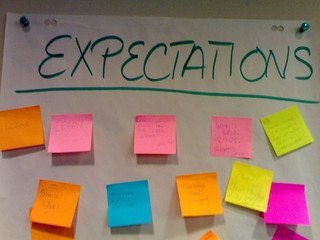Esperanza Elementary
Teacher - Job
Description
Esperanza Elementary (K-6) is a charter school built
upon 4 pillars: 1) Invitational
Education, 2) Glasser Quality School, 3) Best teaching/learning practices for all students, 4) Community Learning
Center. A two-way Spanish-English dual language immersion program in the entire
school is one component. Esperanza will be opening its doors in the 2013-2014 school
year and is doing a nation-wide and international search for full-time teachers
in all grades.
·
Location: West Valley City, UT
·
Salary:
Required
·
Bachelor’s degree (in the U.S. or in any
other country)
·
Bilingual Endorsement or Dual Language
Immersion Endorsement
·
Student teaching in a culturally and
linguistic diverse school or two years of full-time elementary classroom teaching
experience in a culturally and linguistic diverse school, especially with
Latino students
·
Bilingual and biliterate in Spanish and English
·
Advocate for bilingualism, biliteracy, and multiculturalism
for students and families
·
Excellent rapport with all students and
families, especially among the Latino community
·
Supportive of the school vision and
mission
·
Knowledge in technology and computer
skills that support Esperanza’s vision/mission
Preferred
·
Teaching license
·
Experience teaching Spanish and English
literacy
·
Experience/Knowledge helping students learn
a second language and culture
·
Experience/Knowledge in dual immersion education,
especially in a 90:10 model
·
Knowledge about Invitational Education/
Glasser Quality School/ Service Learning
·
Experience/Knowledge in WIDA, SIOP,
TWIOP
·
Familiar with charter schools
Personal
Characteristics
·
Grooming and personality which establish
a desirable example for students.
·
Enthusiastic, dedicated, caring, and who sincerely enjoy working with diverse students
·
Skills working as a team member
·
Flexibility and desire to learn and
implement new educational techniques, strategies, and programs
·
Physical and mental health.
·
Lifelong learner professionally and
personally
\
Major
Duties & Responsibilities
·
Follows the Utah State Office of
Education core curriculum and will adjust the curriculum and differentiate
instruction in order to meet the dual immersion goals of academic achievement, bilingualism,
biliteracy, and biculturalism for all students.
·
Promotes and validates students’ needs,
interests, and values as well as students’ culturally developed bodies of
knowledge and skills in the lesson plans and their implementation in the daily teaching.
·
Creates motivating daily lesson plans as
well as trimester and year-long plans
·
Provides lesson plans when absent-
creates emergency lesson plans on file in the office
·
Encourages cooperative learning and
flexible grouping
·
Provides students with computer
instruction and encourages computer and technology skills
·
Evaluates students’ academic, linguistic
(English and Spanish) and social growth and keeps records.
·
Provides students with the additional
academic support as needed, including before or after school
·
Works collaboratively both vertically
and horizontally with colleagues and participates in looping
·
Assists other staff members in helping
students solve health, attitude, learning problems
·
Participates in committees to further
school goals
·
Participates in grade level, faculty,
PTA and other meetings as requested by the Principal.
·
Develops professional growth by
participating in professional development activities, conferences and workshops
related to dual immersion and/or other educational areas.
·
Follows the Principal’s and families’ suggestions
and directions, and is willing to receive feedback and implement change
·
Completes all paperwork and assignments
on time
·
Is responsive to
teacher/administrative/families requests in a timely fashion
·
Emphasizes family participation and
community involvement in traditional and non-traditional forms.
·
Communicates on a regular basis with families
regarding the students progress and is always available to assist families with
homework
·
Ensures that all students, families,
community members, and visitors are welcomed in an inviting environment
For more information about Esperanza go to
www.esperanzaelementary.org
Please send electronic versions of your resume and
cover letter to: Barbara Lovejoy (barbara.lovejoy@esperanzaelementary.org). Please do not send letters of recommendation
unless requested by Ms. Lovejoy






 Poor performance, turnover, conflict and disengagement. This reads like a checklist of most leaders’ worst fears. I know, because they get mentioned to me nearly every day when I talk with, coach, consult with and train leaders.
Poor performance, turnover, conflict and disengagement. This reads like a checklist of most leaders’ worst fears. I know, because they get mentioned to me nearly every day when I talk with, coach, consult with and train leaders.









